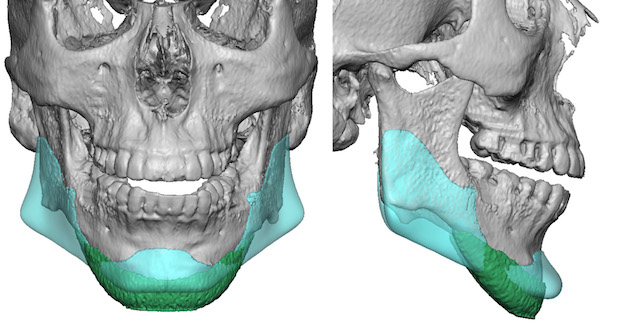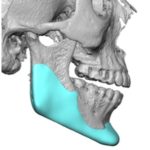Background: The most common style of chin implant is one that provides purely horizontal projection. It works best in patients that need a modest amount of horizontal projection increase and no vertical elongation. While a chin implant can be shifted downward to have its lower edge that sits slightly below the inferior border of the chin bone to provide a slight amount of vertical elongation, this should not be used for any major amount of vertical elongation as that is not what it is designed to do.
For true vertical chin elongation, which is usually more of a combined vertical and horizontal increase with a 45 degree projection vector, a vertical lengthening chin implant is available for that effect. While it can be effective it requires proper patient selection to do so. In the wrong type of jawline shape it can have a very different type of aesthetic outcome. Such undesired chin implant effects is one of the most common reasons patients consider a secondary custom implant approach.
The high jaw angle patient often has a deficient horizontal chin projection and may have a vertically long chin as well. Since the jaw has an L-shape with a vertical ramus and a horizontal body-chin, it is easy to see that a high jaw angle patient with a short chin has an underotated jaw. With inadequate vertical ramus length the horizontal limb of the jaw lacks adequate projection as the L-shape is rotated up and back too far. While orthognathic surgery is the traditional approach to derogating the high jaw angle patient, a custom jawline implant can also do so albeit without a change in the occlusion.
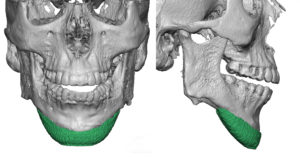
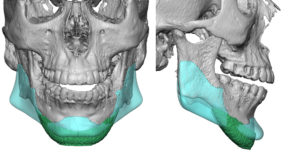

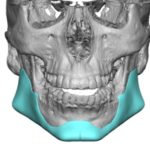
Case Highlights:
1) Improper chin implant style augmentation is one reason patients request custom jawline implants.
2) A high jaw angle is often part of an overall unrotated jaw due to inadequate vertical ramus development.
3) A custom jawline implant can provide a derotation of the jaw effect by providing increased vertical jaw angle length and increased horizontal chin projection.
Dr. Barry Eppley
Indianapolis, Indiana

